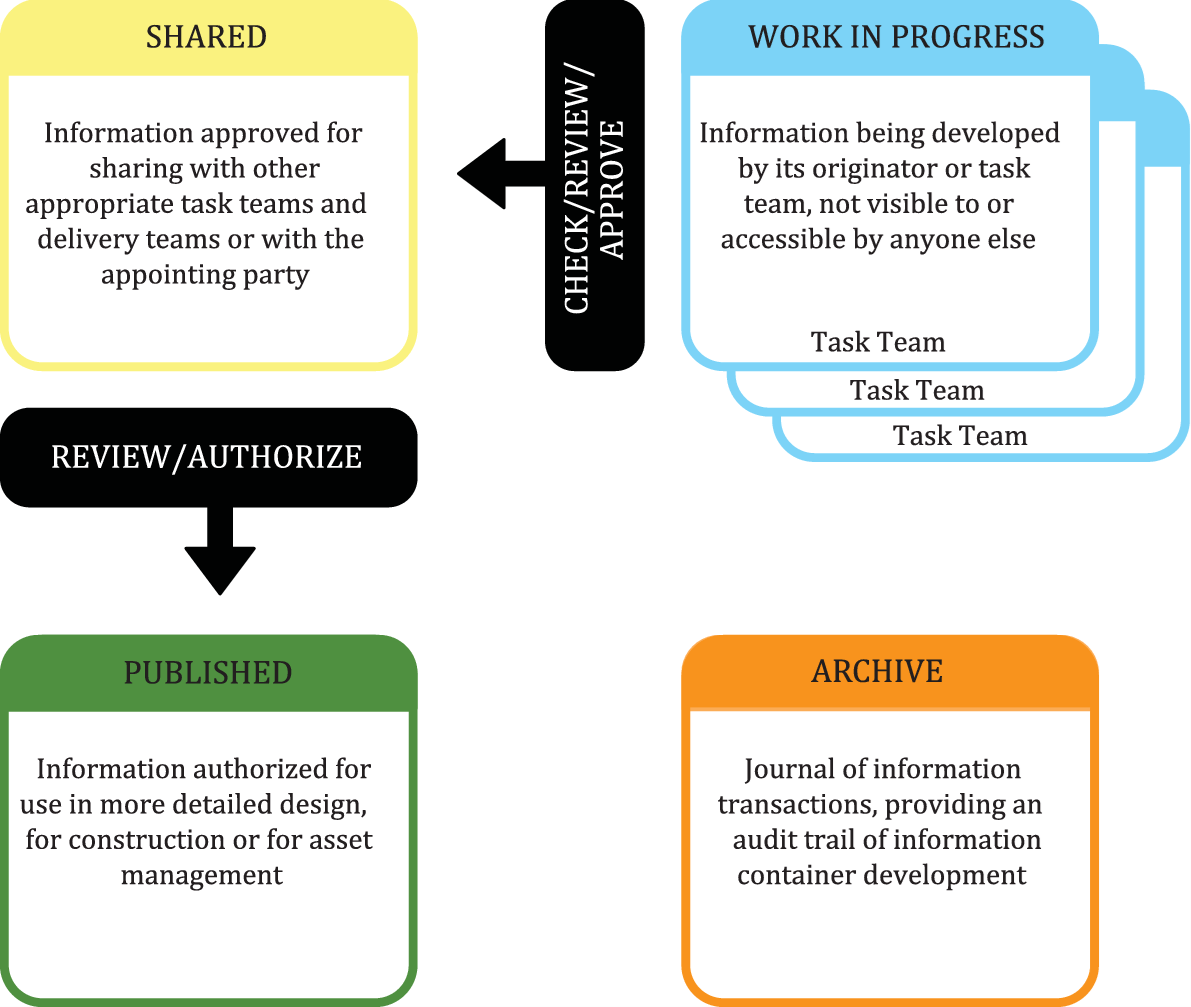Building Information Modeling (BIM) Principles - study material
1. Building Information Modeling (BIM) Principles
1.2. Common Data Environment - CDE
BIM is characterized by interdisciplinary cooperation, and for this purpose the common data environment (CDE) can be used, which in terms of the standard is defined as an agreed source of information for each given project or asset, for the collection, management and dissemination of individual information containers through a controlled process. However, it is not just a virtual shared folder, but enables communication about any part of the model, or buildings. The information managed in the CDE should be comprehensible to all parties.
The common data environment is a central source of project-specific information and is used to collect, manage and disseminate all relevant approved project documents for multidisciplinary teams in a managed process. Thus, we can imagine CDE as an imagined online place that provides a framework for the digital collection, sharing and exchange of information about a construction project.
From the point of view of STN EN ISO 19650-1, CDE has four defined areas:
- Work in Progress - contains unapproved information intended only for team members.
- Shared (Shared) - information that has been checked, commented on, verified and subsequently agreed to be shared with other suppliers, or organizations that can use them as a basis for their further work. After completion of all parts of the project, complete data are provided to the customer for approval.
- Published (Published) - information that was agreed by the customer for use for the purpose of securing the construction, but also in other phases of the life cycle.
- Archived (Archive) - saved important information and records about the project.

Figure 1 Status
of documents defined in STN EN ISO 19650-1
Working in such an environment clearly defines the process for handing over the model and its components, or documents. Individual models made by different members of the project team have clear authorship and remain virtually separate.
This means that the creator's responsibility does not change after a part of the model is incorporated into the federated (merged) model. It is important to mention that ownership of information and all content created by the designer when using CDE is clearly and unambiguously identified. Some systems are even certified according to the international ISO standard, and in the event of a dispute, these records can also be used in court to prove authorship, or the date and form of delivery.
In general, the customer is granted a license to use the information contained in the individual models for a pre-agreed purpose. Based on this license, the customer allows project team members to use models prepared by other project team members.
Even though such a system may sound complicated, CDE can basically represent "only" folders on the server, possibly on a web application or cloud-e, to which all parties involved can access at "one time". Document servers and DMS (Data Management Systems) are commonly used today. A standardized process must take place in the background of the CDE, which defines the workflow when working with documents, i.e. not only with the model, but also with documents, drawings, data and model files. As such, CDE is not a collaboration tool, it represents only an environment, although of course there are programs available that provide this service. Several solutions are available on our market, such as BIM 360 (Autodesk), BIM Cloud (Graphispoft), BIM+ (Nemetschek), Connect (Trimble), ProjectWise (Bentley), Bexel Manager, Dalux and others.